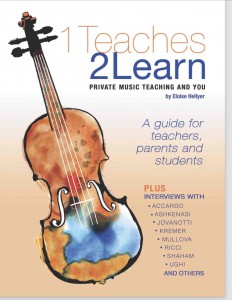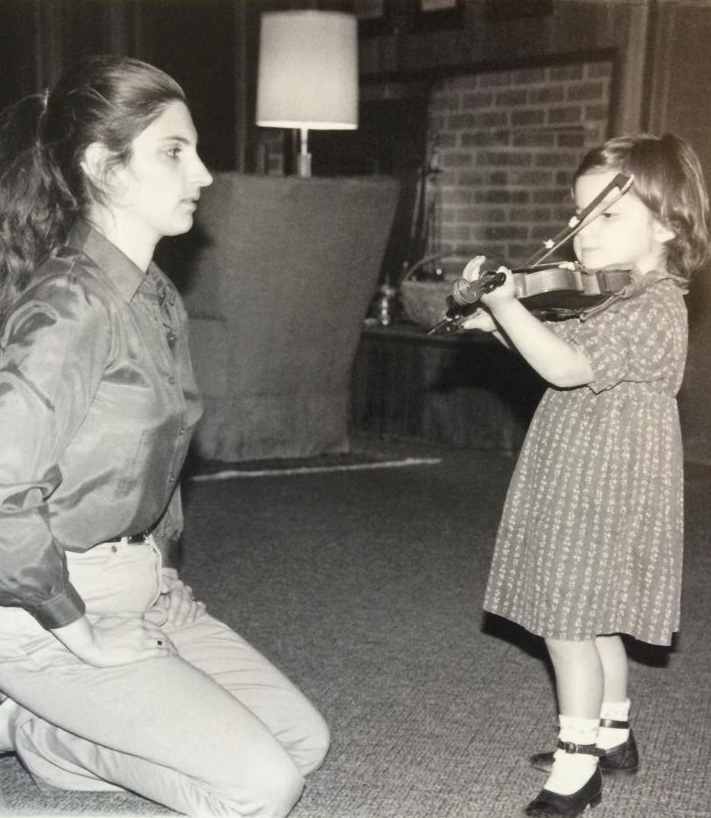Patience Traps, Part 2, part b
Parents, ctd.
My first post, with the photo of a student and teacher, invited the comment there should be a third person pictured – the parent, implying that the parent learns as much as the student and the teacher (1 teaches, 3 learn). This is correct. We also educate or inform the parents so they can help us and their children. They are our natural allies even though it occasionally doesn’t seem like it. We then have to use our charm, energy and charisma to turn them into allies.
But first, we have to try to understand what is behind the questions, statements and affirmations that parents may make. They may not be speaking our language. They may not appreciate or understand that we are sensitive souls who are giving our all for art. They may not know how to talk to us or even how to talk to any teacher. They may not understand that we are on their side and trying to help them be even better parents by showing them how to help their children learn something important. In short, they may not get us at all – we may “be divided by a common language.” * This is a problem only WE can address. We have to explain as much to the parents as to the child even though in principle we are teaching only one person, the child.
Of course, this does not mean we should condescend to people. Just explain. We can even say, “Look I am going to explain everything to you – even things I am sure you already know – so stop me if I go on too much.” They won’t. It all depends on how you phrase things. It ‘s one thing to tell a parent, “Did you know the sky is blue?” and another to say, “My have you seen what a beautiful color of blue the sky is today?” With the second phrase you have accomplished more than with the first, if your goal was to let the parent know the sky is blue. With the first, he feels you have treated him like an idiot. With the second, he feels included in an observation which also informs him.
It is possible for people to speak the same language without understanding each other. Or worse, misunderstanding without even being aware of it. (I never said it was easy to teach.) You can both be of the same nationality, educated in the same university and still not understand each other. Here is an example:
An engineer, a fashion designer, an artist, and an accountant all go to a fashion show:
- The engineer sees the model and thinks, “Well I can see how that dress is cantilevered to stay up with no straps.”
- The fashion designer thinks, ”My, what great use of color and line.”
- The artist thinks, “What an interesting looking woman – I would love to draw her.”
- The accountant thinks, “What? They are asking $5000.00 for a dress that cost $50.00 to make?!!”
This is a good demonstration of how different mindsets can coexist in the same culture. We have been trained as musicians, to think like musicians, to see the world as musicians and must remember that not everyone has a concert going on in his head. So making yourself understood means trying to understand where the other person is coming from and address him in a way that is pertinent to his life. In this way you can find the right words to help people see our point of view so they can better help their children.
There is also another benefit to this – it can be useful to us as musicians and teachers to see ourselves and our work from other points of view. Many of us do not realize how important our work is to our public – we are too close to it. Encouraging the parents of our students to talk to us can help us in our own work as much as it can help us to help them. A different point of view can mean lots of fresh ideas. The exchanges I have with (what seem at the time) the most difficult parents are often the ones from which I learn the most.
End of part b….next, what to do?
* This quote has been variously attributed to George Bernard Shaw, Oscar Wilde and even to Winston Churchill. Even though it is often cited, it seems that none of the above said it in these exact words, but for my purposes it is appropriate here.
Share this:
Buy it on www.sharmusic.com - eBook format, avaliable worldwide, paperback in North America
COPYRIGHT
ABOUT
A music teacher’s thoughts and observations on the teaching and the study of a musical instrument, hoping to be of help to parents, students and teachers.
PHOTO
AWARDED TOP 25 VIOLIN BLOG
CATEGORIES
TAGS
ARCHIVES
-
Agosto 2022
Agosto 2023
Agosto 2024
April 2015
April 2016
April 2017
April 2019
April 2020
Aprile 2022
Aprile 2023
Aprile 2024
August 2014
August 2015
August 2016
August 2017
August 2018
August 2019
August 2021
December 2014
December 2015
December 2016
December 2017
December 2018
December 2019
December 2020
Dicembre 2022
Dicembre 2023
Dicembre 2024
Febbraio 2022
Febbraio 2023
Febbraio 2024
February 2015
February 2016
February 2018
February 2019
February 2020
February 2021
Gennaio 2022
Gennaio 2023
Gennaio 2024
Giugno 2022
Giugno 2022
Giugno 2023
Giugno 2024
January 2015
January 2016
January 2017
January 2018
January 2019
January 2020
July 2015
July 2017
July 2019
June 2016
June 2017
June 2018
June 2019
June 2020
June 2021
Luglio 2022
Luglio 2023
Luglio 2024
Maggio 2022
Maggio 2023
Maggio 2024
March 2015
March 2016
March 2017
March 2018
March 2019
March 2020
March 2021
Marzo 2022
Marzo 2023
Marzo 2024
May 2015
May 2016
May 2018
May 2019
May 2020
November 2014
November 2015
November 2016
November 2017
November 2018
November 2019
November 2021
Novembre 2022
Novembre 2023
Novembre 2024
October 2014
October 2015
October 2017
October 2018
October 2019
October 2020
October 2021
Ottobre 2022
Ottobre 2023
Ottobre 2024
September 2014
September 2015
September 2016
September 2018
September 2019
September 2020
September 2021
Settembre 2022
Settembre 2023
Settembre 2024
RECENT POSTS
Terry G and Me, or Terry Gilliam on Where (or What) Practicing the Piano Will Get You…
The Teaching We Don’t Do Is More Important Than We Think
Overwhelmingness or What Teaching and Motherhood* Have in Common
Cellphone Serenity
How to Build Your Reputation – the Kind You Want
Desperate Times, Desperate Measures. Or How to Deal With Your Strong-Willed Stubborn Student and Survive
“Why Does My Teacher Get So Frustrated?” Letter to a Perplexed Student
Mount Rush-no-more….And How to Get There
Realizzato con VelociBuilder - Another Project By: Marketing:Start! - Privacy Policy




